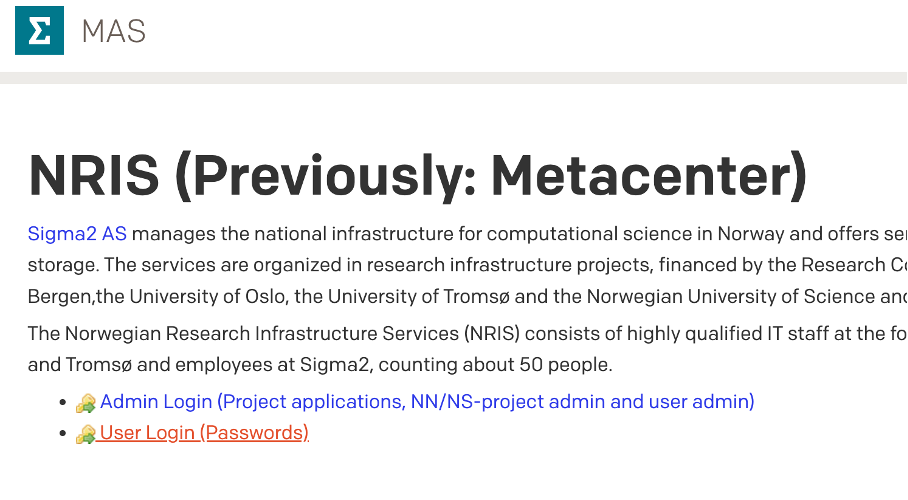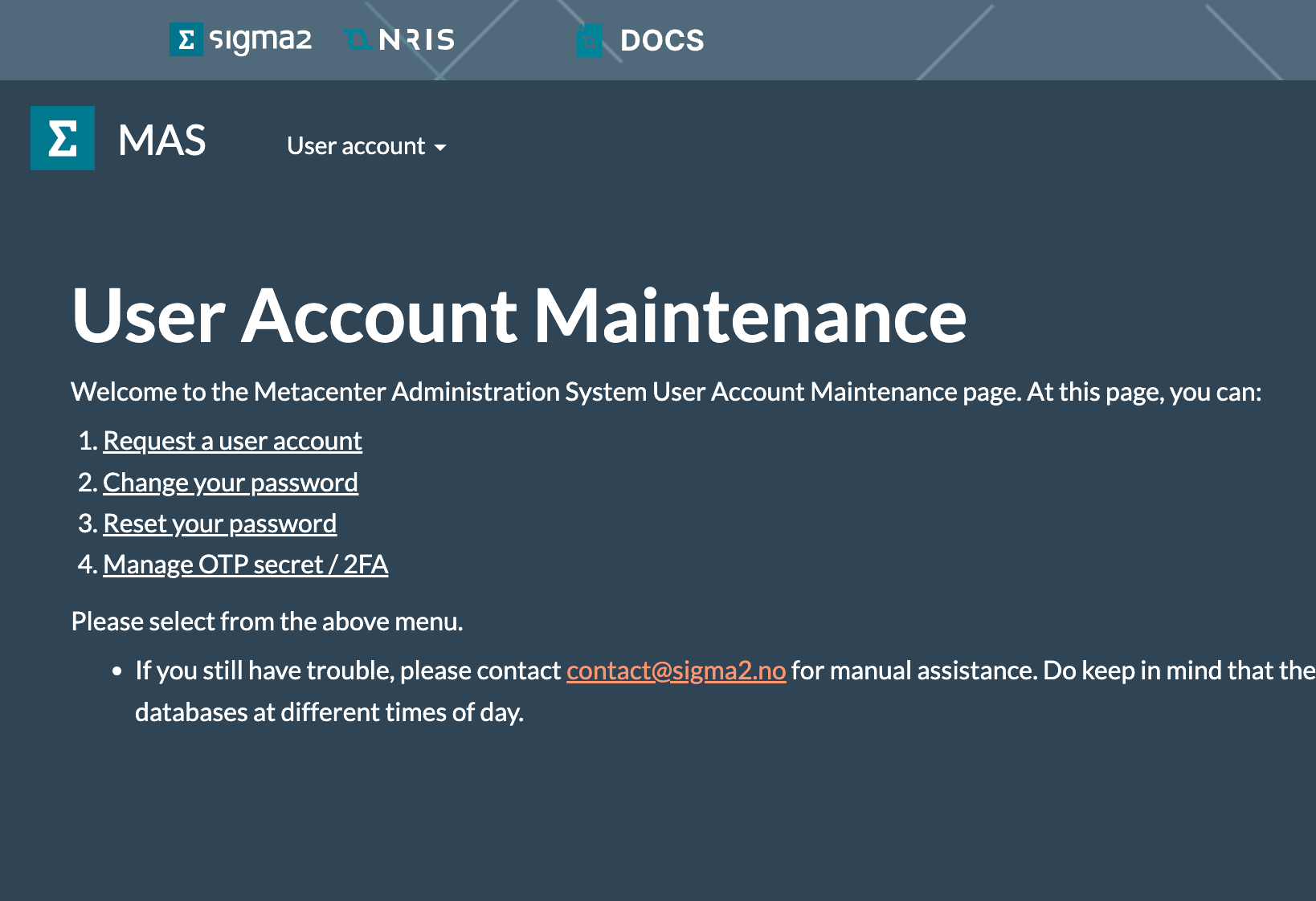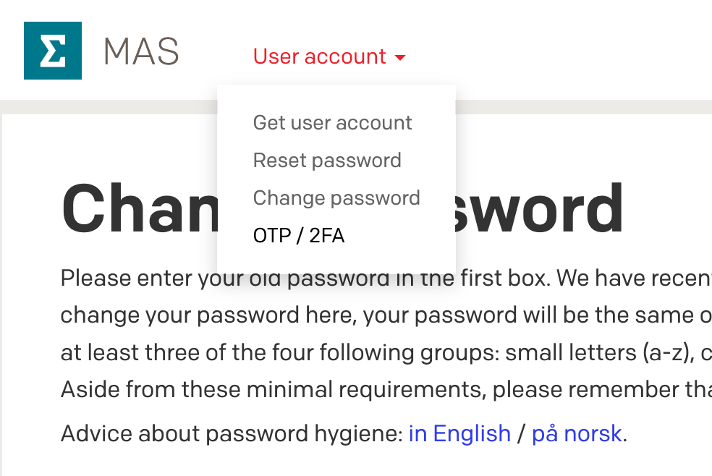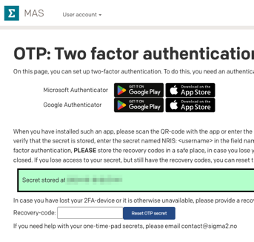One-time-pad (OTP) / Two-factor authentication
All login nodes on Betzy, Saga and NIRD now require two-factor authentication when connecting through SSH.
To set up two-factor authentication for your user, follow these steps:
Go to https://www.metacenter.no, log in, using “User Login (Passwords)”.
 First click User Login (Passwords)
First click User Login (Passwords)
Select “Manage OTP secret / 2FA” from the page or drop-down menu.


Install Authenticator-app if you don’t have one.
Scan the QR-code with your Authenticator app.

Verify with code from your app and click “Submit.”

Wait for the resources to sync the new information.
Video guide
[Video] 2FA setup guide for the national e-infrastructure systems
How to avoid typing the OTP code every time on Linux / MacOS
On your Mac or Linux desktop or laptop, create a text file ~/.ssh/config with, for example, the following contents:
Host saga
User myusername
HostName login.saga.sigma2.no
ControlMaster auto
ControlPath ~/.ssh/%r@%h:%p
where myusername is replaced appropriately.
This sets things up so that whenever you ssh to the host nickname saga: ssh saga
It will look for the special file (a socket) in your ~/.ssh/ directory that is maintaining a connection to the cluster. If it already exists and is open, it’ll use it to create a connection without re-authenticating; if it doesn’t exist, it’ll authenticate and create the file for subsequent use.
Note that all subsequent connections are dependent on the initial connection — if you exit or kill the initial connection all other ones die, too. This can obviously be annoying if it happens accidentally. It’s easily avoided by setting up a master connection in the background:
$ ssh -CX -o ServerAliveInterval=30 -fN saga
The -fN make it go into the background and sit idle, after authenticating. (C for compression,Y for X forwarding, and -o ServerAliveInterval=30 to prevent dropped connections have nothing to do with the ControlMaster but are almost always helpful.)
How to avoid typing the OTP code every time on Windows sub-system for Linux (WSL)
OpenSSH for Windows does currently not support the ControlMaster module, but there is a workaround for this.
By installing WSL and running an Ubuntu terminal you will be able to use SSH as if you were using a Linux computer. You can create the text file under ~/Ubuntu/home/user/.ssh/ and add the same contents as in the example above. Remember to save the text file as config
If you then attempt to ssh to the host nickname saga in this example by using ssh saga in your Ubuntu terminal, it would then create the same socket under Ubuntu’s ssh directory as it would if you were to use a Mac/Linux computer.
You can run an Ubuntu terminal simply by typing the command ‘Ubuntu’ in your Windows terminal.
How to copy files without using 2FA/OTP
To copy files to and from login-nodes without using two-factor authentication, you can use SFTP via custom TCP port 12, for example:
sftp -P 12 login.saga.sigma2.no
or via your preferred SFTP client, specifying port 12 and protocol
SFTP. With recent versions of OpenSSH, one can also use scp, for
instance
scp -P 12 myfile login.saga.sigma2.no:somedir
(see man scp to see if your version supports the SFTP protocol.)
Requirements:
This is only available if you have set up ssh-keys, see guide in getting started.
This is only available on “Forskningsnett” (networks that Sikt (AS 224) announces). Use VPN to connect to your (Norwegian) insititutions network if you for example work from home.